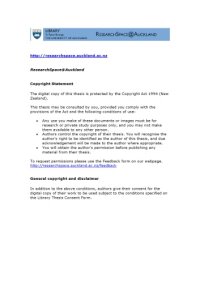
Ebook: Contentious Birds: The Owl and the Nightingale and Other Poems in a Singular Middle English Verse Tradition
Author: Cynthia Margaret Parker
- Year: 2002
- Publisher: University of Auckland
- Language: English
- pdf
This thesis considers the use of birds in medieval English poetry as reflections of humans and human society. I look especially at some of the ways in which medieval animals are used to comment satirically on the frailties and foibles of the human animal, man. Birds and beasts configured as humans present particular problems of identity and alterity that lend themselves well to the composition of recreational verse, and the fact that they are both so similar to humans and so different is particularly conducive to their use as vehicles of parody and satire. Also considered here are some of the early works in which animals are studied both as themselves and in comparison with humans, especially the texts of such classic natural historians as Aristotle and Pliny. I also glance, if only briefly, at the second-century Physiologus, which incorporates the work of Pliny and his followers together with biblical texts and Christianized moralizations. This seminal work, in the form of its direct descendants the medieval bestiaries, is a major source for writers of animal narrative in the Middle Ages. My study is organized in two parts. Part One contains the material outlined above together with some discussion on different kinds of satire—in particular, the satire of incongruity, so important in the context of animal impersonation of humans. It also considers the use of birds in various comic-satiric genres, especially in recreational texts such as the clerk and knight débats, liturgical parodies and, above all, the peculiarly English genre of bird debate. The vernacular literary tradition represented in the eight bird poems in this section—ranging from the thirteenth to the early sixteenth century, some dialogic, some not—virtually constitutes a minor genre in which even a major poet like Chaucer was happy to work. Part Two contains four chapters devoted to a close reading and textual analysis of a single poem, The Owl and the Nightingale, probably the earliest and certainly the best of all the Middle English two—party bird debates. (My title—Contentious Birds–is derived from the descriptive title of thirteenth century poems in this particular debate tradition: The Thrush and the Nightingale, for example, appears in MS Digby 86 under the heading, "Ci commence la cuntent parente le Mauuis & la russinole”). A spirited dispute of nearly eighteen hundred lines, The Owl and the Nightingale dates from the late twelfth or thirteenth century, and is remarkable above all for its freshness and originality, and its sheer, delightful ease of writing. A final chapter looks at conclusions in the debates and other poems in this study; at the question of the disputants' usefulness to man, particularly in The Owl and the Nightingale, and at the fluctuating nature of the boundaries that separate human from animal. Principal concerns in my thesis are the nature and the variety of the literary relationships constructed in the Middle Ages around these dividing lines between humans and birds or beasts (in this case, birds), and the ways in which these precarious lines of demarcation can be put especially, to recreational literary use.
Download the book Contentious Birds: The Owl and the Nightingale and Other Poems in a Singular Middle English Verse Tradition for free or read online
Continue reading on any device:

Last viewed books
Related books
{related-news}
Comments (0)